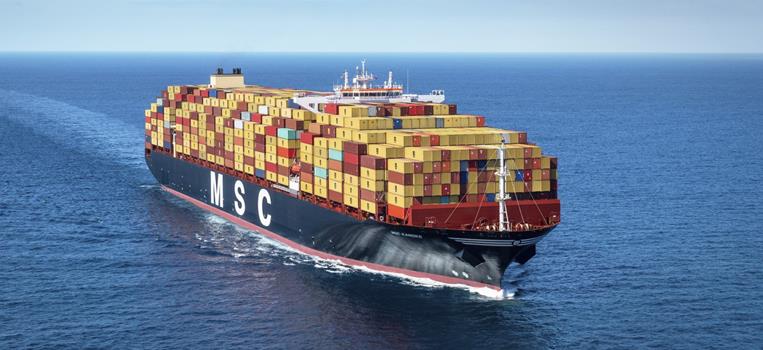Maersk: Transpacific West Coast peak season - impact felt in Southern California and Pacific Northwest
Sep 18, 2020Strong import volumes in the Pacific market are affecting many parts of the supply chain as everyone has experienced the last 60 days. (In fact, Maersk seeing strong demand with year-on-year growth from China to USA, Europe and most of Latin America). Maersk also anticipates this market will remain strong through November – and possibly continue through January with the rush prior to Chinese New Year.
Maersk has responded to the strong market by:
- Reactivating idle vessel capacity
- Cancelling all blank sailings
- Adding more containers to their fleet by leasing all the containers they could find in the market
- Focusing on turnaround of containers in North America, South America and Europe to help with equipment flows in the major trades
- Loading as many empty containers as possible on vessels sailing back to Asia
In addition to vessel capacity measures, Maersk is also seeing issues that are lingering longer than expected, impacting supply chain performance.
Chassis shortages
Five years ago, there was a fleet of 74,000 chassis. Today, it is 64,000. The out of service rate is currently around 8%. A significant number of chassis are being used to store full import containers too, resulting in increased dwell times.
Labor shortages
A dip in labor availability with truckers, Warehouse & Distribution workers and Longshore Labor. This is the result of a combination of CDC guidelines in social distancing in warehouses, some truckers have parked their trucks and returned to their home country and our Longshore labor - is using more casuals.
Terminals: PNW
The strong, ongoing influx of import volumes has maximized terminal yard utilizations in container yards in Prince Rupert and Vancouver – and often exceeds infrastructure limits. Because of the ongoing port congestion, Maersk opted to push vessel schedules by one week (instead of having the ships anchor for a week outside the ports). Keep in mind, common user port facilities inherently rely on every ocean carrier diligently moving imports off terminal quickly – and - getting empties loaded back on vessels returning to Asia to ensure healthy container yard performance. Terminal congestion lasting through November is also anticipated. The situation remains very prone to the slightest disruptions in volume, weather, vessel, and rail issues etc. Maersk's marine leadership team is in constant contact with terminal operators to plan ahead and ensure terminal operations/schedule performance.
Southern California
APM Terminals Pier 400 Los Angeles terminal is working closely with the trucking community and closely collaborating with Weston LaBar, CEO of the Harbor Trucking Association to optimize truck flows at Maersk's terminal. Of interest, in the 2M Alliance, they offer customers and truckers two terminals (Pier 400 Los Angeles and TTI in Long Beach) which is easier for truckers than other alliances with multiple terminals in the harbor.
Rail
PNW ports are heavily reliant on rail performance. Rail operators are keeping pace with car support into Prince Rupert and Vancouver/Centerm but are experiencing heavy volumes every week. This past week, CN had an agriculture train derail, resulting in three day disruption on tracks which will be felt in Vancouver rail movements. (The derailment is fixed today and normal flows are resuming). Maersk's rail leadership team is in constant contact with CN on a frequent, daily basis to ensure tight operations.
Los Angeles/Long Beach
At APM Terminals Pier 400 and TTI, rail operations are fluid and both terminals work well together on the rail product with BNSF and UP.
Empty containers
The equipment flow this year from Asia has been very one-sided with import flows the dominant player. To balance the flow – and restore containers to Asia asap - Maersk is eager for export cargo and empty returns to ensure equipment availability in Asia.
As you can see, the peak season issues we’re experiencing are a combination of strong market conditions – with infrastructure and assets straining to keep pace.
As a result, they encourage customers to add more buffer to supply chain schedules that allow for potential disruptions/delays and to view the current situation as ongoing through November before a recovery to normal supply chain velocity is seen. The return of empty containers is also vital – to keep equipment flowing and to free up chassis.
Similar Stories
AGLPA Issue Update - Nov 2024
Today the Maritime Administration (MARAD) awarded nearly $580 million to 31 recipient ports in 15 states and territories. These grants are from the agency's Port Infrastructure Development Program (PIDP). Five…
View Article
Viking Line named Finnish security organization of the Year
View Article
Ocean Network Express and Seaspan Corporation jointly announce the establishment of ONESEA Solutions
View Article
MSC Customer Advisory
View Article
ZIM launches its USA Employer Brand Campaign to attract top talent
View Article
Hapag-Lloyd achieves good result in first three quarters of 2024
View ArticleGet the most up-to-date trending news!
SubscribeIndustry updates and weekly newsletter direct to your inbox!





